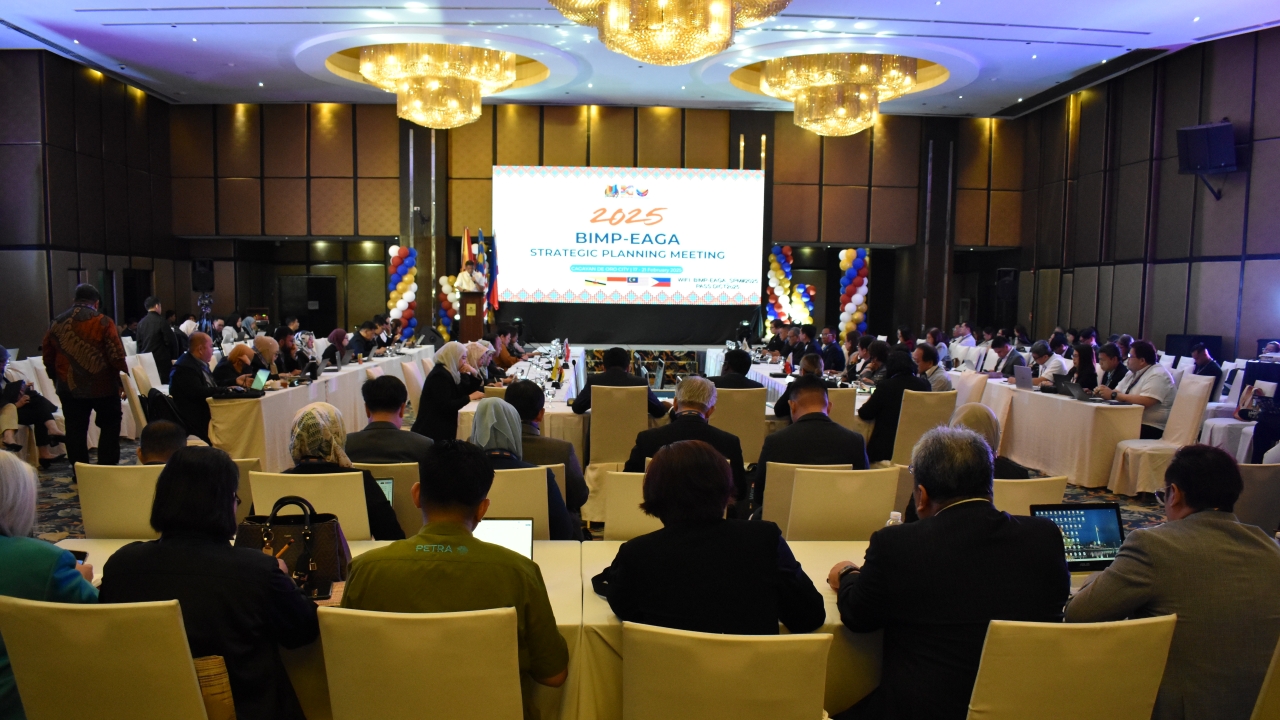More than 300 delegates from the Brunei Darussalam–Indonesia–Malaysia–Philippines East ASEAN Growth Area (BIMP-EAGA) gathered in Cagayan de Oro City last month for the 2025 BIMP-EAGA Strategic Planning Meeting. Hosted by the Mindanao Development Authority (MinDA), which serves as the Philippines’ national secretariat for BIMP-EAGA, the meeting was held from 17 to 21 February in hybrid format.
High on the agenda were the work plans and deliverables for the year, including for the BIMP-EAGA Summit in May, and preparations for the post-BIMP-EAGA Vision 2025 (BEV2025) strategy.
“This gathering marks a significant milestone as we assess our progress under the BIMP-EAGA Vision 2025 and set the stage for our strategic directions beyond 2025,” said Secretary Leo Tereso Magno, chairperson of MinDA. He called for stronger collaboration and policy support to sustain the progress of the subregion.
This is the final year of implementation of BEV 2025, which set out to develop a resilient, inclusive, sustainable, and economically sustainable subregion for the past 8 years. At the 27th BIMP-EAGA Ministerial Meeting in Kota Kinabalu last October, the ministers tasked senior officials and cluster and working groups of the subregion to expedite work on remaining projects according to the BEV 2025 timeline.
BIMP-EAGA’s rolling pipeline of priority infrastructure projects (PIPs) has increased to 210 as of October 2024 from 57 in 2017, with 52 projects successfully completed and 158 in various stages of implementation. Total investments for the pipeline of projects amount to $65.48 billion. These projects include roads, railways and bridges, inland transport services, airports, seaports, power and energy infrastructure, information and communication technology (ICT), trade facilitation (including customs, immigration, quarantine, and security systems; economic zones; and industrial parks), and urban and border town development. The significant increase in the number of projects is mainly driven by plans to expand and reconfigure BIMP-EAGA’s economic corridors to take full advantage of emerging economic opportunities.
Held every year, the strategic planning meeting brings together senior officials, cluster and working groups, national secretariats, the BIMP Facilitation Centre, the BIMP-EAGA Business Council, stakeholders, and the Asian Development Bank as regional development advisor.
Representing Malaysia’s national secretariat for BIMP-EAGA, Deputy Director Parteeben Subramaniam of the Ministry of Economy highlighted the meeting’s role in addressing economic challenges and advancing regional cooperation. He expressed optimism that discussions would yield concrete programs benefiting the subregion.
The meeting took stock of progress and accomplishments, aligned sector strategies with overall goals, and discussed convergence initiatives on cross-border trade and transport, multi-country tourism circuits, and trade facilitation. It also identified new areas of cooperation and projects that may be included under the post- BEV 2025 strategy.
The delegates welcomed the continued support of the Asian Development Bank (ADB) in implementing BEV 2025 priorities. The clusters and working groups reviewed the recommendations in the mid-term review of BEV 2025 led by ADB, which considered global trends and drivers of change, such as the clean energy transition; digitalization; green, blue, and circular economy; and expanding the role of economic corridors in developing the subregion.
